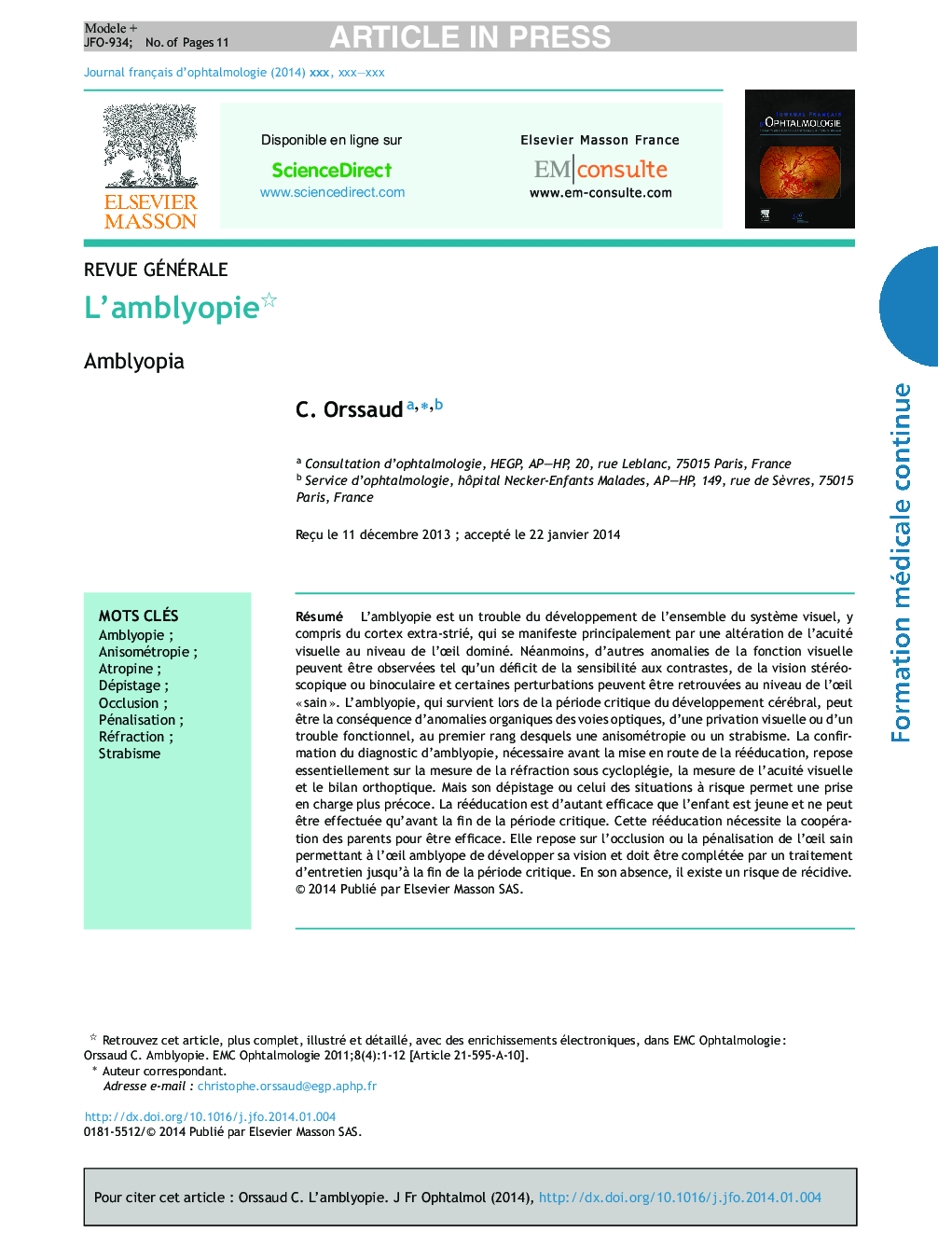| Article ID | Journal | Published Year | Pages | File Type |
|---|---|---|---|---|
| 4023329 | Journal Français d'Ophtalmologie | 2014 | 11 Pages |
Abstract
Amblyopia is a developmental disorder of the entire visual system, including the extra-striate cortex. It manifests mainly by impaired visual acuity in the amblyopic eye. However, other abnormalities of visual function can be observed, such as decreased contrast sensitivity and stereoscopic vision, and some abnormalities can be found in the “good” eye. Amblyopia occurs during the critical period of brain development. It may be due to organic pathology of the visual pathways, visual deprivation or functional abnormalities, mainly anisometropia or strabismus. The diagnosis of amblyopia must be confirmed prior to treatment. Confirmation is based on cycloplegic refraction, visual acuity measurement and orthoptic assessment. However, screening for amblyopia and associated risk factors permits earlier diagnosis and treatment. The younger the child, the more effective the treatment, and it can only be achieved during the critical period. It requires parental cooperation in order to be effective and is based on occlusion or penalization of the healthy eye. The amblyopic eye may then develop better vision. Maintenance therapy must be performed until the end of the critical period to avoid recurrence.
Related Topics
Health Sciences
Medicine and Dentistry
Ophthalmology
Authors
C. Orssaud,
